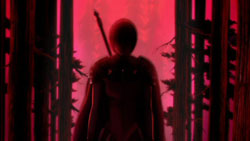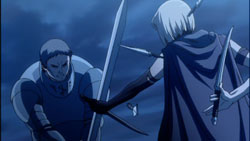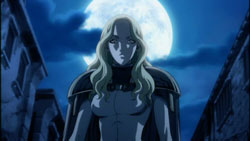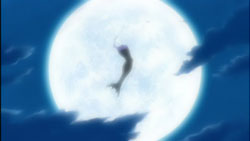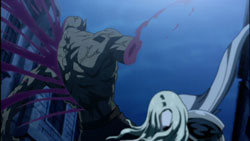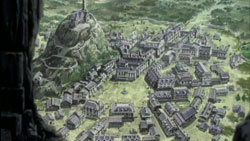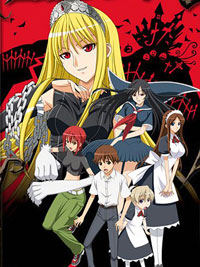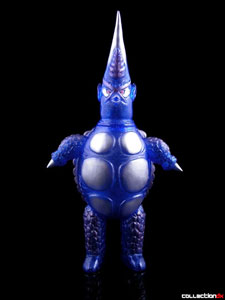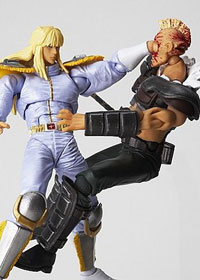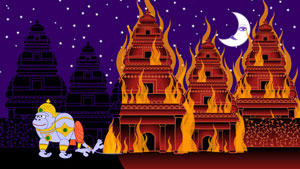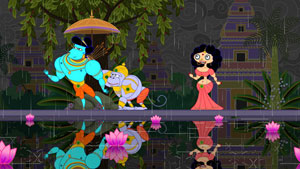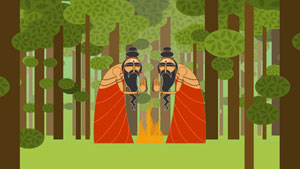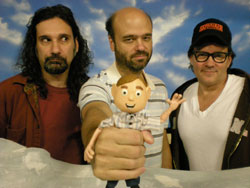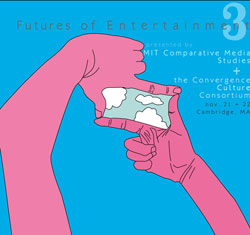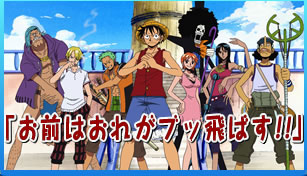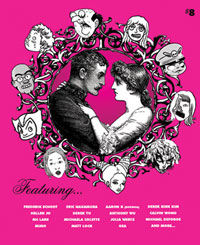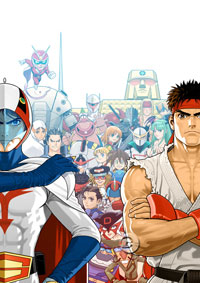 Logo handmade by Bannister
Column by Scott Green
Logo handmade by Bannister
Column by Scott Green
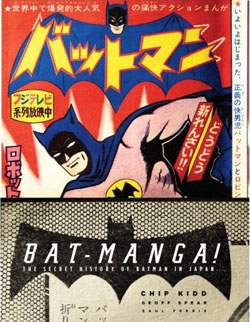
Bat-Manga! The Secret History of Batman in Japan From Chip Kidd, Geoff Spear and Saul Ferris Released by Pantheon Book
In 1966, the Adam West Batman show began airing on Japanese TV. In response, Shonen Gahosha's now-defunct Shonen King commissioned 8 Man (aka Tobor: The Eighth Man) co-creator, and uncredited artist on the Speed Racer manga (according to Manga: The complete Guide) Jiro Kuwata to produce a Batman manga. Re-interpretive, riffing adaptation has had a significant role in the history of manga. In 1947, "God of Manga" Osamu Tezuka created a sensation with New Treasure Island (Shin Takarajima), resulting in the "Shin Takarajima shock" that inspired Kuwata's generation of manga artists. Two years later, Tezuka created an adaptation of Metropolis, informed by a synopsis of Fritz Lang's movie and a poster rather than a familiarity with the film. Instead of a manga version of the existing story, Tezuka's Metropolis became a proving ground for ideas that would later produce Astro Boy, and, to some extent a reaction to Disney's mode of story telling (at a climactic moment, the mustachioed Shunsuke Ban kills a Mickey-esque mouse monster, cuts it open, and disguises himself in its skin). Given the opportunity to work with one of the prime icons in super-hero comics, along with a stack of reference material, Kuwata opted to produce a new interpretation of Batman. Batman remained an acrobatic detective in a blue cape and cowl over a gray body suit, Robin remained a sprightly kid in red, yellow and green, and the Batmobile remained as the 60's TV show Lincoln Futura, but the adventures were propelled into new territory. The stories seemed in a hurry to outrace rationality, almost projecting Batman into a Speed Racer world. Batman would hunt for a Clayface who'd walk into a bank disguised a Batman or ship himself to an art gallery disguised as a statue, then fight Batman as a human-sized preying mantis and fly off as a pterodactyl; Or, Batman would scramble to unearth the secret behind Lord Death Man, the skull faced, tommy-gun packing robber who'd apparently die when apprehended, only to re-emerge for another heist; he'd fight a genius gorilla or the telekinetic "Man Who Quit Being Human" There's a bit of Wild West attitude in the '66 Batman manga. With Kia Asamiya's 2000 Batman: Child of Dream and Yoshinori Natsume's 2008 Batman: Death Mask, there were established channels and methodology for cross pollinating American and Japanese talent and IP. 1966's wrote its own rules. It could have been a straight adaptation. The parties involved had the Bob Kane playbook, but instead, they went with their perceived notion of what a Japanese audience would want in their Batman. Nothing stands over calculated to conform to concept of a "Batman" or action manga. Yeah, Batman tries to outride a tornado and Robin bickers with a old lady in that casually insulting way that should be familiar to fans of anime and manga, but the work is neither self consciously campy nor cartoony. A manga prodigy, who was published by age 13 with 1948's The Strange Star Cluster, Jiro Kuwata came into the art form soon after Tezuka laid down a foundation for the modern manga tradition. An aspect of Tezuka's imprint was to move away from manga as illustrated theatre with characters as actors positioned center stage. Kuwata brings that cinematic manga mindset to Batman. We're at ground level as black clad figures pop out of graves, guns blazing. We look over Robin's shoulder as more advance from behind tombstones. If you have Katsuhiro Otomo's Akira manga and Kuwata's Batman, to the two up next to each other. Batman stands as an example of the essential core of what's been elaborated upon to form some of the great spectacles of manga. There's a significant distinction between Kuwata's 1966 Batman manga and Bat-Manga! The former was ephemera that exists in hard to find issues of Shonen King, in the hands of collectors or where ever that sort of thing lies hidden. Evidently, Kuwata's Batman did not remain in either the American or the Japanese consciousness. It was never reprinted in collected form prior to this release. Chip Kidd has noted in interviews that Kuwata's Batman was published along with a wave of Batman toys and merchandise that retreated as quickly as it hit. When Kidd presented this proposal to Paul Levitz, president of Batman publisher DC Comics, Levitz acknowledged that the existence of Kuwata's Batman came as a surprise to him Bat-Manga! is a collection of a considerable portion of the Kuwata Batman manga that author/graphic designer Chip Kidd and Batman collector (lawyer by profession) Saul Ferris could locate (there's an exclusive to the hardcover edition of Bat-Manga! as well as plenty of talk about a second collection if the first finds an audience), as well photographs of merchandise and other ephemera by Geoff Spear and an interview with Kuwata. The pleasure of viewing Bat-Manga is not that of sitting down to read a collection of manga. The book is not the equivalent of an oversized graphic novel. Part of that is due to the intention of these stories to be read in serialized form, in the context of an anthology. While most manga in North America is read as graphic novels, there's plenty of manga, including titles that are only available in North America through the format, that don't read well in collected form. With its meter of specific cliffhangers and climaxes, Kuwata's manga is one. Beyond that, Kidd and Ferris are not able to locate the end to end material for entire stories. Bat-Manga! picks up after the opening chapters and drops off before the end of several of Batman's adventures. Instead of a graphic novel, Bat-Manga stands as an art or coffee table book, depending on your perspective and use for it, a conversation piece or document. Enhancing that perspective, pages of the manga are reproduced in found condition. In other words, it's an artfully arranged catalog of a vein of pop culture-history, where the narrative is as much about the existence of Batman manga as it is the stories depicted in that manga. Recently re-reading sections of Frederik L. Schodt's 1996 book Dreamland Japan: Writings on Modern Manga, I was reminded that as popular as manga has become in North America, as much as enthusiasts have read, only the most dedicated have done more than scratch the surface. There are worlds of publications never seen by most readers. Prominent creators who are largely unheard of. History outside the range of what is read. This book widens that perspective. As proof that Kuwata's Batman manga existed, reproduced how it was published, Bat-Manga! is invaluable. At this point, I have to drop in a significant disclaimer. Bat-Manga! is a design intensive book, and design is not a field in which I particularly trust myself. I've done enough user interface work and heard enough criticism to know that I'm not exactly an ace in the field. As such, photographs of the Batman merchandise captured in Bat-Manga! spark some trivial connections ("Batman hanafuda cards, that's an interesting context for the character." "A Batman tank, that seems a bit contradictory".) I don't really have the tools to react insightfully to the photos or Kidds' contribution to the book. I will say that even as some one who has looked at countless American reinterpretations of Japanese pop-culture and Japanese reinterpretations of American pop culture, given the talents of Kuwata, Kidd and Spear and given that it is an American re-interpretation of a Japanese reinterpretation of American pop culture, I find Bat-Manga! to be profoundly engrossing. Conversely, I am an info junkie. As such, I would have appreciated the inclusion of more context on the work and life of Jiro Kuwata. As great as the interview was, here's a creator who made his name at age 13, who went to jail for handgun possession on the brink of completing his best known work, 8 Man and who later turned his attention to Buddhism. It's a fascinating story, with insight into the establishment of what could be thought of as the modern manga tradition. Hopefully Bat-Manga2 will cover the subject more thoroughly.
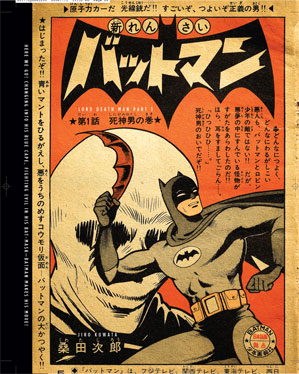 | 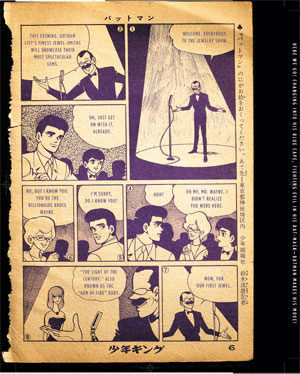 |
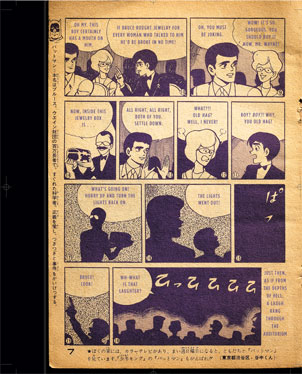 | 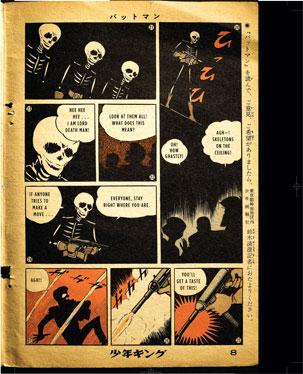 |
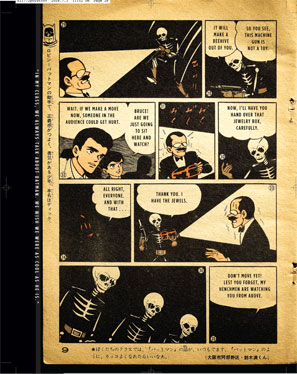 | 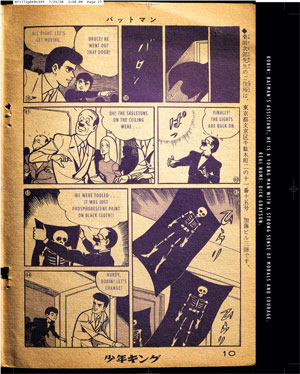 |
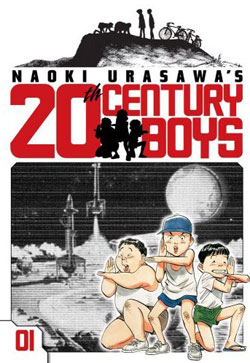
Manga Preview: Naoki Urasawa's 20th Century Boys Volume 1 to be released by VIZ Media February 17, 2009
20th Century Boys is the perfect title to discuss in the same column as Bat-Manga. There are streams of pop culture detritus carried forward through the passage of time such as shonen manga, movie posters, hit songs... For many, this media mass sits idly in the back of the mind, or increasingly, on an iPod. Some enthusiasts try to catalog and preserve it. For other fanatics, it becomes a John Nash obsession to piece together the significance that may emerge when connecting points in this constellation of ephemera. Supposed your CD collection, the comics that got thrown out, and secret plans that you sketched out with your friends in grade school were the clues to unraveling a conspiracy that threatened the future of humanity... It's High Fidelity meets It. Naoki Urasawa, best known in North America for his morality thriller Monster, is a masterful author of serialized stories. If manga had a Charles Dickens, it would be Urasawa. On an arbitrary page of 20th Century Boys... two police detectives are interviewing a young-ish man carrying out the trash. He's a bit gawky looking and animated, but attention is also drawn to the fact that he's doing his errands with an infant strapped to his back. Informed that a whole family is missing, the young man's heart skips a beat. After expressing his dismay, the cops tell him to keep his voice down. Then, the young man's eyes narrow and his hunch from carrying the heavy bag of trash turns into a slouch as he realizes that the head of the missing household had run up a tab with his business. Between the detailed context of the retail space in the background, the cartooned expressiveness of the young man, and the subtle differences expressed strictly through illustration between the rigid, fastidiously dressed younger cop, and slightly larger around the middle, crew cut and a tie is sufficient veteran, Urasawa creates a credible, breathing scene. At a glance it feels right. The impression is real people in a real place. Broken down, the alignment of small, precise designs decisions in the illustration and dialog creating that reality is nothing short of amazing. As one of these interactions flows into the next, these resolutely human characters quickly begin conveying genuine thrills, humor and depth. As the stories of these people twist and turn, Urasawa's work becomes full value manga that is convoluted in the most engrossing possible way. The evolution of these dynamic characters is written chapter by chapter and volume by volume. Consequently the impression of following the manga as it develops is not necessarily the same as the impression formed by looking at the series in retrospect. For that reason, I'm going to try to cover the introduction to 20th Century Boys as if I had only read the first volume. Maybe I'll speak to the larger series at a later point, but, I feal that blocking off everything but the opening chapters is a worth while way of approaching Urasawa's provocative commencement. In 1973, Kenji Endo thought he'd at least change the world around him. He'd bring about a sort of revolution by hijacking the school's speaker system to broadcast T-Rex's 20th Century Boy rather than Paul Mauriat's Love is Blue. At the dawn of the 21st Century, the United Nation assembly is recognizing that after two World Wars and a nuclear armed cold war, humanity almost succumbed to an unexpected threat at the dawn of the new millennium. A round of applause greets the footsteps of "those who saved humanity from certain extinction." In 1969, Kenji, and a group of friends who tended to be short, fat, bug eyed, frog faced or evil looking sit in a field, planning out a fort where they'd hide from bullies, listen to the radio, read manga, and thumb through the occasional nudie mag. In 1979, Kenji sat against a brick wall, the only guy still strumming Jumpin' Jack Flash, and talked would-be bands. The present is 1997. He's the last bachelor in his more or less incommunicado circle of friends. He's running what was the family's liquor store, which he converted to a franchise convenience store, much to his mother's dismay. His sister abandoned her baby daughter and disappeared, so that infant is strapped to Kenji's back; again, much to his mother's dismay. The news of the world isn't good, with Africa suffering an unknown plague. Local news isn't particularly good either, with police coming by to ask Kenji if he has any information regarding the mysterious disappearance of a local professor, who went missing along with his family. More personally crushing news is yet to come, because Kenji is about to learn that his boyhood friend "Donkey" committed suicide by leaping from an upper floor of the high school where he taught science. This is not the rock and roll life that Kenji wanted for himself, but he's committed to fulfilling his responsibilities, especially raising his niece. While he had enough to handle between the struggling store and the infant, Donkey's death does not sit right with Kenji, nor does the fact that Donkey and the missing professor had a student in common. Everywhere he turns, atoms of his youthful activities seem to be blown over the mystery. In particular, the emblem of his boyhood association, a hand with outstretched index finger in the center of an eye, seem imprinted on these events. Out of Kenji's sight, "Friend" is amassing cultish followers through a combination of stag magic and self help dogma very reminiscent of the proclamations of a group of young boys, planning their heroic futures. One of the final scenes of 20th Century Boys' first volume captures a woman griping to her friend about what sounds like an irksomely horny boyfriend. The punch line is a bit obvious. She's actually not talking about a guy. It's a dog, used in her work as a customs officer. 20th Century Boys is evidently a mystery concerning the person from or reflection of Kenji's past that is tied to the disappearance of his neighbor, Donkey's suicide and, presumably, the millennial threat that's been foreshadowed. So far, there have been a few pieces to a jigsaw puzzle and a fuzzy image of the box. One provoked question has to be, to what extent does (nearly) ending the volume on the silly dog-boyfriend misdirection intentionally tip 20th Century Boys' hand to misdirections yet to come? Urasawa's Monster offered a mystery of similar dimensions to 20th Century Boys. In addition to the psychology behind the "who did it for what reason?", the manga provoked moral questions, starting whether all lives are equal and the responsibility incurred by saving the life of a monster. In the case of 20th Century Boys, its psychological facet borders on questions of semiotics. In one page, ex-guitarist Kenji holds his hand out to show off his no longer calloused fingers. The next page maps the gesture to a millenarian speaker, stretching out his arms for a crowd's ovation. Is it dramatic irony, justified by the plot, or suggestive of some meaning of the gesture? Morality is always a button-pusher, and it's not surprising that Monster attracted talks of a Hollywood adaptation. Symbols? That's very manga (which is built on a language of symbols from the panels markers and word balloons to speed lines), very geeky (refer to Genshiken - the Society for the Study of Modern Visual Culture's erotic image apologia), and in a way, very current (does anything generate more symbols and cartooned images than a presidential election? ) Beyond that question, 20th Century Boys offers something distinctively adult. While there has always been a solid concept of realism in Urasawa's work, from Yawara! A Fashionable Judo Girl (an unbeatable judo Olympic hopeful in a sports, dramatic comedy) to Master Keaton (a bit Indiana Jones, a bit James Bond, featuring a SAS master sergeant turned Lloyd's of London investigator) to Monster (a genius doctor in a fugitive scenario), Urasawa's heroes have been hyper-competent. Kenji contrasts that lineage of heroes by never excelling. He never made it as a guitarist. He's struggling as a small business owner. A couple of qualities fundamentally set Kenji apart from an everyman. Kenji doesn't seem to be the guy who is secretly special. No one seems poised to tap him on the shoulder and tell him that he's secretly gifted with the ability to save the world. Yet, he is special, or a least significant. As a child, he drew up secret fellowships, ray guns, alien invasions, and city toppling giant robots. In some way, his Ultaman and Tetsujin 28 inspired imagination became the blueprint for future danger. Beyond that, Kenji is neither a head-strong adventurer nor a reluctant hero. Some might grouse at the possibilities of running a convenience store and the burden of raising a sibling's children. In the manga, Kenji gets plenty of "how are you going to find a wife when you're carrying around a child grief." Yet, while this character can't really do something like other Urasawa heroes, his fierce determination to fulfill what he believes to be his responsibilities puts him on a level with those characters. Piecing together this complex composition.... Kenji doesn't have the ability to be the One, yet for some reason, he's tied to something cataclysmic. At the same time, he's demonstrated that he's willing to fulfill a needed role. In a sense, he's the guy willing to take responsibility for his moment in history... a perfect sentiment for our time.
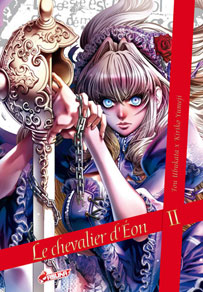
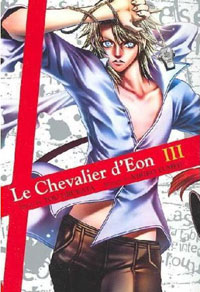
Manga Spotlight: Le Chevalier d'Eon Volumes 2 and 3 Story by Tou Ubukata Manga by Kiriko Yumeji
With all of the Bat-Manga talk of late, I decided to take a step towards catching up on what I consider to be a particularly enjoyable Batman-esque manga ("step" because this piece will cover volumes 2 and 3 of the title; volume 6 has recently been released). Tow Ubukata's Le Chevalier d'Eon invented a supernatural explanation for the life of Chevalier d'Eon, a historical 18th century French diplomat and spy who is remembered for cross-dressing during his missions and living his later life as a woman. In the case of Ubukata's fictionalized d'Eon, the young nobleman and member of King Louis XV's secret police began sharing a body with the soul of his beloved sister after her murder by a conspiracy of magician philosopher Poets. Le Chevalier d'Eon is probably best known in North America for the Production I.G's (Blood+, Ghost in the Shell) anime adaptation of Ubukata's novel, but the manga trends closer to the spirit of Ubukata's work. Like other prominent I.G anime, Le Chevalier d'Eon brought together impressive team of creators to craft a distinctively detailed and at times experimental series. The results were comparable to an 18th century alchemistic Ghost in the Shell: Stand Alone Complex. The manga is substantially quirkier... Ubukata is one of the hyper-informed geeks working in the anime/manga field (he also writes light novels and has been involved in games). Perhaps partially as a result of growing up in Singapore and Nepal and attending Waseda University's school of political economics, he seems to bring a broader perspective to his works than many of the otaku turned creators. Rather than return to the overdrawn wells in fantasy and sci-fi or settle for the generic, he seeks out interesting spots in history (such as pre-Reign of Terror France in Le Chevalier d'Eon) or invents new situations. At the same time, there is generally a playfulness and flamboyance, not to be found in the Le Chevalier d'Eon anime. The manga's d'Eon lives a triple life. By day, he's a foppish member of Paris' nobility and an officer in the city's police. Much to the aggravation of his raging commanding officer, he ducks out when there's a riot to beat down. He never completes an investigation. His equipment is frequently broken and his paperwork is shoddy. At the same time, d'Eon is also a member of King Louis XV's Le Secret du Roi, minding France's relationship with foreign powers such as Russia and England, and, in theory, collating classified information. By night, d'Eon dons a wig and his sister, Lia's gown to become The Sphinx, a swashbuckler channeling Lia's spirit to solve the riddle of her death and punish the murderous, supernatural agents known as Poets. d'Eon/The Sphinx is aided in this venture by the young attendant, previously in the employ of Lia, Francois de Robespierre, aka "Robin." When approaching Chevalier d'Eon, Production I.G took the route of rendering an intricately realized vision of 18th century France, with an emphasis on establishing a concrete notion of time and place. Kiriko Yumeji took that context and used it as a spring board for more modern, more niche associations. One of the key ingredients in the Gothic Lolita fashion movement is the Roccoco style of design. Given Louis XV's palaces to work with, Yumeji has a Mola Ram handle on the heart of the Roccoco movement. With that opportunity, she projects modern loli-goth sentiments back upon its origins. Yumeji's look, especially as it applies to Chevalier d'Eon is somewhere on the gore-goth to loli-goth spectrum between Yasushi Nirasawa and Junko Mizuno. It can be quite goofy, but there also is a lot of shock rock horror showiness to it. Part of the fun of the manga is watching Yumeji map Enlightenment notions and personalities onto the notion and personalities into this aesthetic. For example, Jean Le Rond d'Alembert becomes a Marilyn Manson figure. Fans of the loli-goth look or exotic stylistic flare will find plenty to appreciate in Yumeji's illustration. Those looking to just sit down and read a story might by overwhelmed be the visual intensity of the manga. Between the bulky men, busty women, loli-girls who sprout out in frills, parasols and coils of hair, everyone in the manga crams the panel with their presence. Bursts of swords, blood and speedlines slice out as the Sphinx duels against the extending claws and horns of gnarled gargoyles. Back to the Batman metaphor, it's a "biff!" "pow!" comic, but in this situation, those collisions are merely cymbal crashes in the middle of an outright cacophony. With barely any negative space apart from the middle of an explosion, even when not engaged in full bore action, there is little opportunity for the eyes to rest. Chevalier d'Eon is a remarkable manga, but in terms of a series of graphic novels to read through, it's lightweight. Storytelling never seizes hold from the stark design decisions, with attention being directed to Ubukata and Yumeji rather than d'Eon, Robin and company. Because the manga is showy and meta, the graphic violence mostly sits well with the silliness of pope blessed lances wielded by British SS officers and murderous loli cabaret twins (do either of these make any sense?), but the same qualities don't encourage much investment in mystery and danger of the situations. Any Ubukata work to be translated into English is worth scooping up. The North American release of his Renaissance fantasy Pilgram Jager is incomplete and difficult to locate, but with a tangible sense of physicality to its action and appearances by personalities like Machiavelli and Ignatius Loyala, its worth the effort to find. I was never won over by NewType USA's industry-booster reviews and page dominating images, but I did appreciate the now-cancelled magazine for including translated Ubukata's columns. The concept of Le Chevalier d'Eon cracks a ledge off the mountain of storytelling, then holds up the sedimentary chunk, covering gender alternating alchemistic lore, early modern pop adventures like The Scarlet Pimpernel, comic heroes like Batman, and the exhibitionist alter-egos found in loli-goth and shock rock. Le Chevalier d'Eon might not be one of the better reads in the field, but three volumes in, Ubukata and Yumeji's pageant of loligoth vigilante, speculative history continues to yield inventive surprises.
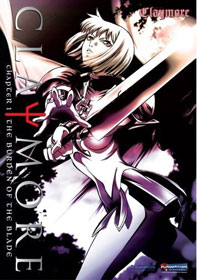
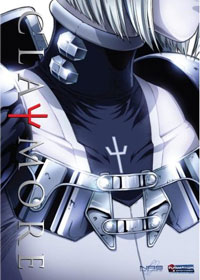
Anime Spotlight: Claymore Volume 1 Released by FUNimation
I have no problem with X is like Y with Z descriptions of media, when they're useful. For example, something to the effect of "Claymore is like Berserk with young women in the place of a grizzled mercenary." This comes frequently in introductions to Claymore, and when previewing Viz's release of Norihiro Yagi's original manga, I said "The look is a little Berserk and a little Shadow Star, and the action is all about quick infliction of massive and certainly fatal amounts of bodily damage." I've kindof soured to that analogy. They're both low fantasy, presumably tragic, swords against monsters anime/manga, but that's about the extent of the likeness. With the qualities and emphases of one not mapping to the qualities and emphases of the other, a detailed comparison becomes an unproductive exercise. Instead, what can be said for Claymore is that it delivers what's promised on the box. It commands respect for not tip toeing around or slighting the audience in what its offering. It's bloody battle-nymphs versus ripping, rending boogie-men. If you want high emotion, the glint of steel and monsters being separate from their limbs as if Obi Wan was getting griefed at the cantina, Claymore delivers by the two-handed sword swipe.That woman with the sword on the cover sees plenty of action as a stoic warrior, ready to walk through the rain of her enemies spraying blood. There will always be a place in the heart of many anime fans and prospective anime fans for an anime that swings a blade nicely. Claymore fills that niche. There's a particular roof top battle between a black clad woman, equipped with a dagger in each hand, and the tag team of a long sword wielding knight and knife tossing bravo, where the energy, choreography and spectacle of whizzing and whirling blades clinches Claymore's position as a contender for the top spot in this year's anime-gladiatorial games. That armed cover girl is Clare, one of the agents of "The Organization" who are colloquially called "Silver Eyed Witches" or "Claymores." These lone warriors are deployed to locales where demonic yoma have been attacking humans. The Claymore uses her (they're always women) gift for differentiating the shape shifting yoma from the demon's prey, then single-mindedly exterminate the threat. After executing the mission, the Claymore informs a representative of the community that another officer of The Organization will stop by to collect the fee for riding of the area of its yoma infestation, then the Claymore departs. Even when the Claymores are engaging in hunting yoma, their is little love between the general human populous and the Silver Eyed Witches. It's apparently widely known that Claymores are half yoma themselves, and that the demonic graft is what allows the Claymores to detect and best the yoma. These early episodes are eager to reiterate the "half yoma, half human" composition of the Claymores. Beside their desire to kill yoma, they seem to really only care about dying before they lose all humanity. That young women become de-humanized by adopting the body and mission of a Claymore may be the primary point of the anime series, but it's at least an unavoidable theme of this first block of episodes. I've only seen these episodes, and I haven't kept up with the manga, so I don't know how deeply Claymore establishes its characters or the exact nature of the controversial ending to the anime. And, I'm aware that the anime get some "best ever" votes. I can say that, one volume in, my eyes have been drawn to problems with the anime, but of the sort where I found myself questioning whether I should check my critical perspective to some extent. I remember about 12 years ago, Final Fantasy VII had not hit, Beyond the Beyond was THE name in next-gen RPGs, and Record of Lodoss Wars was the standard for fantasy anime. The anime was a fairly straight adaptation of pre-Advanced Dungeons and Dragons, with characters who were simply an "elf" or a "fighter" and highlights like an exquisitely drawn, but barely animated red dragon moving across the screen. Since then, the ability for a video game to create its own immersive, fantasy world has encroached on domain that was exclusive to animation. Now, a big budget game is likely to have as wide a breath of design as a work of anime, if not wider, and look as good as a work of anime, if not better. Given the sort of virtual world that a current-gen video game can create, a fantasy anime that relies on the vicarious thrill of action, like Claymore has to distinguish itself by the depth of its characters and the artfulness of its direction. It's not a treatise on the dehumanizing nature of conflict, but Claymore handles its characters well enough so far. Reading too much into Claymore's conceits does the anime no favors. Personally, I was wondering how trade and community could be maintained when yoma kept infiltrating locales and preying on their populous. People aren't trusting the "Silver Eyed Witches?" How are they trusting anyone? The anime offers nothing startlingly insightful so far, but nothing to negate a benefit of the doubt either. When it comes to the animation, I could be getting caught up in details that are less likely to bother viewers who become more involved with the anime. I also strongly suspect that something when wrong. While far from terrible, it's not up to the standards of Madhouse Studios' laundry list of great anime from the Satoshi Kon movies, to the Girl Who Leapt Through Time to Ninja Scroll to Black Lagoon to Card Captor Sakura. Claymore is not a chinsy production, but whether a surface is shimmering with a distractively obvious digital effect, or a background that is intricately detailed, evokes the look of a prop set artificial environment, director Hiroyuki Tanaka does not manage to pull everything together. The anime's principle characters look fine. I've wracked my brain trying to pin down exactly what about the secondary characters reminds me of an OEL manga in which the illustrator is trying to reproduce a perspective "manga style" rather than build off their own understanding. I'm not sure if the blame goes to Takahiro Umehara, who managed to make Oh!great's design less than impressive in Tenjho Tenge, or... You know, Claymore seems a bit DrMovie-rific. I don't want to blame the Korean animation studio DrMovie, but, I will say that I pondered to myself, "I wonder if DrMovie had a hand in this? only to look up the series specs and confirm that they were in charge of Animation Production Coordination, as well as Photographic Direction, 2nd Key Animation, In-Between Animation, In-between Inspection and Key Animation. The above mention roof top fight scene does look excellent, and if you deconstruct the fight, it has the complex details that necessitate an active director and a medium like anime. But, more often, the anime's fights are of the slash and spurt variety. The attacker is in one position, then they're in another, a flying limb and a spray of blood demonstrates the aftermath. These are quite grisly, but almost as if to use graphic violence to mask simplification. Small amounts of scrutiny blow large holes in the illusion. If video games were not part of the media equation, I'd laud Claymore for producing fights and personalities that stand apart in the current crop of fantasy anime. Unfortunately, I can't think of many other well produced, new fantasy anime. More significantly, especially where DVD is the primary vehicle for the anime, and someone who might be interested in purchasing that DVD might also be interested in purchasing a game, I'm not convinced that Claymore distinguishes itself from other edged melee thrills.
ADV to Handle Princess Resurrection Anime
Anime News Network has learned that ADV Films will be localizing and distributing horror action-comedy Princess Resurrection for licensing company Sentai Filmworks. The first of six volumes will be released March 17, 2009. Episodes of the title will run on Anime Network's video-on-demand service, with subtitled episodes streaming online.
Upcoming in Japan
Via GodMars DX, Sankaku Complex reports that Macross creator Shouji Kawamori has lowered expectations on the upcoming Macross F 2059:Memories. A translated quote states As it won't be by any means a completely new work, it won't change things as with the previous series and its movie, but it will follow the original story, and make various improvements. Various subtle changes will also be made to the setting and story… According to Half Moon Diary, Kawamori says that the format has imposed an simplication or reduction of Macross F's characters arcs, but he does leave the assurance that there will be "lots" of elements placed into the movie that didn't make it into the anime. AnimeNation reports that Kyoto Animation’s (Haruhi Suzumiya, Lucky Star) first original anime title, the unfinished two episode Munto OVA series, will be remade as a television series titled Sora wo Miageru Shojo no Hitomi ni Utsuru Sekai (The World Reflected in the Eyes of a Girl Looking Up at the Heavens) for broadcast next year. Via Anime News Network The Studio 4°C produced Street Fighter IV anime Street Fighter ~Aratanaru Kizuna~ (Street Fighter: Renewed Bonds) will ship with initial Japanese orders of the Street Fighter IV game in February 2009. Newtype is confirmed that Tenchi Muyo! spin-off Isekai no Seikishi Monogatari is in production with co-creator of the Tenchi Muyo! and Dual! projects Masaki Kajishima's involvment. The story is set in an alternate world called Geminar, where countries have fought endless wars with replicas of humanoid Seikishi weapons that they found in ancient ruins. 15-year-old Kenji Masaki, the half-brother of Tenchi Muyo! protagonist Tenchi Masaki, is summoned from another world to Geminar. A new Prince of Tennis manga series is on tap to be announced in the next issue of Jump Square. The purported series advertisement from the Jump Square issue says that everything in The Prince of Tennis up to now has been "prologue" and that "a new legend for [the main character] Ryoma and the others will begin." Bandai's upcoming toy solicitations sent out to retailers suggest that "New Precure (Precure Follow-up)" will replace magical girl anime Yes! Precure 5 GoGo! starting February 1, 2009. Toei Animation will be offering the first Pretty Cure through Crunchy Roll Bow Ditama's (Mahoromatic) office lady from an alternate world sci-fi comedy Fight Ippatsu! Juden-chan!! will be adapted into an anime series.* AnimeNation notes that the six entry of Type-Moon horror Kara no Kyokai-Garden of Sinners will open theatrically on December 20th, and the series’ final film will be released next spring.* Twitch has posted the trailer for the Japanese live action adaptation of murder thriller Goth at here.The novel is also being adapted into a Hollywood live action film by JT Petty (The Burrowers, S&Man). AICN Anime's review of the manga can read here * reports that Kodansha is starting a new label titled "Kodansha Birth" (???Birth). New writers and illustrators under the age of 29 are eligible to apply.
Cool Figures News
Via Alt Japan Tim Eldred's exceptional Shotgun Blast - A History of Yamato Toys Old and New* AstroBoy World notes Jazwares Inc., the company behind toy lines such as Mortal Kombat, Viewtiful Joe, and Mega Man has been awarded the master toy license for the new Astro Boy movie.* Collection DX posts of note Age of The Flying Boat / Savoia S.21 Early / Late Fio Repair Type "Folgore" (of Porco Rosso fame) Medicom RAH Kaijin K-20 (pulp hero of upcoming movie) Maschinen Krieger G-PAWN plastic kit by Wave Five Star Stories Vostok T233 Resin Kit The site's CollectionDX Nor'easter Vegetius is now available for purchase. The limited edition figure (50 produced) sells for $65Toypunks Volume 2 has been filming in Tokyo. * Revoltech Fist of the North Star - Jagi Revoltech Revolution Shin from Fist of the North Star* Spike Witwicky Gets His Due How a Girl Figures on Eye Up’s Badass YokoAnimeStuff's Perfect Grade Strike photos Panson Works Luffy Vinyl Figure Custom She-Ra My Little Poney
Event News
The New York International Children's Film Festival will be presenting Sita Sings the Blues on November 8th and 9th at 11am at New York's IFC Center. Animator Nina Paley will be in person following both shows. Tickets can be purchased here Sita is a goddess separated from her beloved Lord and husband Rama. Nina is an animator whose husband moves to India, then dumps her by email. Three bickering shadow puppets with Indian accents act as comic narrators as these old and new stories are interwoven in a post-modern, feminist retelling of the ancient Indian epic Ramayana, animated in a dazzling mix of traditional and collage animation styles, and backed by a soundtrack from legendary 1920's jazz singer Annette Hanshaw. This visually stunning, highly original, subtly subversive comedic work is as enjoyable for children as it is for adults. A trailer can be reviewed here* Toys"R"Us will be distributing "one of the most unique and powerful dragon-type" Pokémon via Wireless Distribution November 8 and November 9 (12 pm to 4 pm ). On Saturday, November 8 and Sunday, November 9 from 12 pm to 4 pm, Pokémon fans who bring their Pokémon™ Diamond or Pokémon™ Pearl Game Card (sold separately), along with their Nintendo DS™, to any Toys"R"Us store in the United States and Puerto Rico will have a chance to add a Level 50 Dragonite to their game. Giveaways at this exclusive Toys"R"Us event also include a complimentary Pokémon Ranger™: Shadows of Almia poster and a coupon for $5 off any Nintendo DS game, for redemption at Toys"R"Us stores only.* Wizard World Texas will be screening two episodes of Spaceballs:The Animated Series ("Hairy Putter" and "Mighty Meteor" ) on Friday November 7th from 5-6 p.m. in the Michael Turner Room at the Arlington Convention Center.The creators of the Adult Swim series "Moral Orel" will appear at the Wizard World Texas convention. During their appearance on Saturday, November 8th, Dino Stamatopoulos, Scott Adsit and Chris McKay will participate in a special panel with everything from a question and answer session and clips from upcoming episodes to insights on how the dirtiest stop-motion animation series ever is made. Scott and Dino will also play Match Game alongside some of the biggest names in comics during Saturday night’s game show event benefiting the Hero Initiative. Game Show Night, Wizard World Texas style, will be held Saturday, November 8th from 6:30 – 8:30 P.M. in the FearFest Room at the Arlington Convention Center. Admission to the event is $5 and tickets to the event can be purchased at the Hero Initiative Booth on the show floor. Contestants will be determined by raffle. Raffle tickets ($2 each, 3 for $5) can be purchased at the Hero Initiative booth. One lucky winner will win a JS20S 20TH Anniversary Model electric guitar from Ibanez, which features a stunning rendering of the Silver Surfer on the body, IBZ Axis pickups and the Edge III trem. The Silver Surfer art comes from the album jacket of the groundbreaking Joe Satriani album "Surfing with the Alien." Contestants must be present at the event to win. The Hero Initiative is the first-ever federally chartered not-for-profit corporation dedicated strictly to helping comic book creators in need. Hero creates a financial safety net for yesterday’s creators who may need emergency medical aid, financial support for essentials of life and an avenue back into paying work. * Anime, as Japanese animation is usually called, is an immense presence in the culture of Japan, with a global reach as well. During the film series "Anime for Grown-ups: The Art of Japanese Animation," the Sterling and Francine Clark Art Institute will examine anime not from the perspective of genre expectations, but through the work of directors who speak in the international language of film. The Sterling and Francine Clark Art Institute in Williamstown, Massachusetts has begun presenting the "Anime for Grown-ups: The Art of Japanese Animation." Films are free and held on Saturdays in November at 1 pm (Japanese with English subtitles) and 3 pm (dubbed American version). Whisper of the Heart ( 1995, 111 min., rated PG ) November 8 For Whisper of the Heart, a thoroughly charming tale of adolescent romance and a bright young girl’s search for self, Hayao Miyazaki wrote the script but gave the direction to heir apparent Yoshifumi Kondo. If you liked Juno, you will love this winning story of a brash schoolgirl finding both a boyfriend and a calling in life. Grave of the Fireflies ( 1988, 88 min., rated PG-13 ) November 15 Directed by Isao Takahata, Hayao Miyazaki’s longtime collaborator, Grave of the Fireflies is a sensitive, harrowing film that depicts the impact of war on children, warranting comparison to all-time classic Forbidden Games. An orphaned boy and his younger sister, struggling for survival in the aftermath of the World War II firebombing of Japan, find evanescent beauty in a terminal landscape. Tokyo Godfathers ( 2004, 92 min., rated PG-13 ) November 22 Satoshi Kon, a young director to watch, transposes John Ford’s Western Three Godfathers to the underbelly of modern-day Tokyo, with three tramps—an alcoholic, a transvestite, and a teen runaway—finding a baby on Christmas Eve, and encountering comic adventures in their heartwarming attempt to return the child to its mother. Paprika ( 2006, 90 min., rated R ) November 29 Paprika is the therapeutic avatar of a powerful woman psychiatrist, partnered with a blubbery nerd genius who has invented a machine that allows physical entry into the dreams of subjects, a dangerous weapon in the hands of the unscrupulous and power-mad.* Vu Nguyen, executive at Asian media digital distribution site Crunchy Roll will speak at the Massachusetts Institute of Technology (M.I.T.) Comparative Media Studies and the Convergence Culture Consortium, held November 21-22, 2008 at the M.I.T. campus in Cambridge, MA.Vu Nguyen-Vice, President of Business Development and Strategy, to speak on the creation of trans-media story-worlds, understanding the appeal to migratory audiences and the production of digital extensions for traditional materials at this year's Futures of Entertainment 3 conference. Mr. Nguyen will be speaking (Friday, November 21, 2008) on the panel, Making Audiences Matter, along with individuals from the world of entertainment and educational institutions. Some of the panel¹s topics will include:
- Examining the Migratory Audience
- Advertising Avoidance
- Building Audience Relationships
- Connecting Audiences with Content
- Engaging the Audience
* VIZ Pictures announced that DEATH NOTE II: THE LAST NAME will be screen one-night only at select Cineplex Entertainment and Empire Theatres locations across Canada on Wednesday, December 3rd. Advance tickets go on sale on November 7th and for more information, screening times, advance tickets and a complete list of participating theatres go to, www.DeathNoteFilms.com or www.cineplex.com or www.empiretheatres.com/deathnote. VIZ Media’s SHONEN JUMP magazine will lend additional support with a promo ad in the December 2008 issue, which hit stores on November 4th.* New York-Tokyo will be screening Shinobu Yaguchi's (Waterboys) Happy Flight on December 3rd as apart 15 of the Nippon Eiga series, presented by ANA. Director Shinobu Yaguchi, actor Seiichi Tanabe, and actress Haruka Ayase will be making guest appearances at the event.Director Shinobu Yaguchi brought feelings of laughter, tears, and exhilaration to audiences with his films about boys’ synchronized swimming(WATERBOYS) and girls’ high school big band jazz (SWING GIRLS). The theme of his latest film, HAPPY FLIGHT, is "airplanes" - of all things! Yaguchi’s intent was to create a realistic, completely new film that oversees all corners of the aviation industry. Having ANA (All Nippon Airways) lend their Boeing 747 for filming and 500 staff members’ involvement, he created a wonderfully entertaining film chock-full of Yaguchi’s love and fascination of airplanes. The setting of the film takes place at an airport and on an airplane. A great variety of "aviation professionals" such as pilots, flight attendants, the ground crew, mechanics, dispatchers, controllers, and the bird patrol crew all support a single flight. They have only one mission: to secure the safety of the passengers. Today was supposed to be any other day on the job, departing on schedule and heading safely to Honolulu, but… Just like riding on a jumbo jet, please experience this movie as tremendously fun and exciting! For both screenings, Director Yaguchi, leading actor Seiichi Tanabe (Memories of Tomorrow, Honey and Clover) and leading actress Haruka Ayase (Cyborg She, The Magic Hour) will make special appearances. Wed., Dec.03, 2008 (1) Door 1:15pm, Film 2:00pm (2) Door 6:00pm, Film 6:45pm Japan Society: 333 East 47th Street, NYC Admission Free. Need RSVP to attend here * Anime Masterpieces will present "Grave of the Fireflies," Saturday, Dec. 6, 2 p.m., in the Smithsonian's Freer Gallery of Art’s Meyer Auditorium. The film is followed by a panel discussion with leading authorities on the subject of Japanese animation, or anime. For tickets, see here The panel discussion features Pulitzer prize-winning historian John W. Dower, author of "Embracing Defeat: Japan in the Wake of World War II"; Japanese literary authority Susan J. Napier, author of "Anime from Akira to Howl’s Moving Castle"; and manga and anime historian Frederick L. Schodt, author of "Manga! Manga! The World of Japanese Comics." Produced by New York-based company Gorgeous Entertainment, the series is aimed at enhancing the understanding and appreciation of the Japanese art of anime. At each screening, audience members are given study guides containing essays by eminent scholars of Japanese pop culture and animation, which are supplemented by numerous images from the film. The winner of several international film awards, "Grave of the Fireflies," written and directed by Isao Takahata, chronicles the experiences of two children as they valiantly struggle to survive amidst the ravaged landscape of Japan during World War II. It is considered by many critics as one of the most moving anti-war films ever made. Chicago Sun-Times critic Roger Ebert calls the film "an emotional experience so powerful it forces a rethinking of animation." The next scheduled screening of "Grave of the Fireflies" is Feb. 11, 2009, at the Museum of Fine Arts in Boston. The next film in the Anime Masterpieces series is "Tekkonkinkreet" and is available for screenings courtesy of Sony Home Entertainment beginning January 2009.* TOKYOPOP's Director of New Product Development Jeremy Ross will participate in a 'Protecting Copyright in a Digital Age,' panel Wednesday, November 19 from 5:30pm to 8:30pm at the Korean Cultural Center, Los Angeles. Organized by the Korea Copyright Commission and Entertainment Asia Network, the panel will also feature MPAA Chief Technology Officer Jim Williams, U.S. Department of Commerce Senior International Trade Specialist Maura Kawai, KBS America Director of New Media Business Marketing Jeffrey Chang and Los Angeles City Attorney's Office Deputy City Attorney Christopher R. Garcia, moderated by entertainment lawyer Clifford Lo.
Digital Distribution
World Screen Anime News Network notes Tezuka Productions will be posting 700 manga titles and 100 anime titles from Osamu Tezuka online starting this week. For the next three years, all works produced before 2000 will be available for viewing. Tezuka Productions is also planning to set up paid video distribution sites, DVD retail sites, and sister sites in English and Korean.* Shonen Jump's Jumpland site will feature the Jump Super Anime Tour Dragon Ball (made with involvement by creator Akira Toriyama), Tegami Bachi (a recently manga, scheduled to replace Slam Dunk in the American Shonen Jump), and One Piece: Romance Dawn (based on the One Piece prototype) shorts on November 24th.
* ComicBookResources has a feature on iVerse Comics, an iPhone/iPod Touch service that brings comics including "Proof," the popular Image Comics series by Alexander Grecian and Riley Rossmo, "ShadowHawk" from Jim Valentino, "Flash Gordon" from Arrden Enterainment, "Wrath of the Titans" from Bluewater Productions, and "Oz: The Manga" from Antarctic Press to the portable devices. WebSlog offers a brief reaction to the experience* Avatar Seasons 1 and 2 are now available through Veoh
Eletric Ant Available
ELECTRIC ANT #1: YOUR FIRST KISS, a new zine created & published by Ryan Sands (Same Hat, Tokyo Zombie), featuring graphic design and illustrations by Evan Hayden is now available through electricantzine.com forA 92 page compendium of... COMICS, FICTION, ILLUSTRATIONS, LISTS, INTERVIEWS, & AWESOMENESS. Features: TALKING WITH THE MASTER OF MANGA Author Frederik Schodt on translation, Tezuka, and life as a teenager in Tokyo THE ILLUSTRATED HALL OF DARK LORDS My favorite cartoonists take us on a tour of the darkest lords that ever lived! YOUR FIRST KISS Revisited in all its glory... in the form of comics, short fiction, and drawings DEPARTMENT FOR IMPLEMENTING 15 KINDS OF VIOLENT DEATH A photographic tour of Beijing's Dongyue Temple and its assorted hells FEATURE COMIC: LOVE ENTITY BY AARON K A beautiful and demiurgical tale of transtemporal love and destiny Goodies: 4-KOMA STRIPFEST NIN LIBS THE 5 WORST PLACES TO FIND YOURSELF AT THE START OF THE ZOMBIE APOCALYPSE NINE NUGGETS OF ZINE WISDOM FROM ERIC NAKAMURA 7" x 8.5" digest, 92 pages bound like a paperback. Color cover inside & out, B&W insides with a 4-page color first kiss survey spread. Printed locally at 1984 Printing in Oakland, CA A preview can be seen here
Anime on North American TV
Bandai Entertainment Inc. announced today that Code Geass R2 will move to 2am on Adult Swim starting November 8th with a rebroadcast of the first episode "The Day the Demon Awakens" which premiered last Saturday. Subsequent episodes will air at 2am each week. R2 continues the Code Geass story immediately following the events of the Season 1 which just concluded airing on Adult Swim. Lelouch and Suzaku are on a collision course as Zero’s revolution escalates toward its climatic conclusion. One of the most successful anime in recent years, Code Geass: Lelouch of the Rebellion features animation studio Sunrise and a story by Goro Taniguchi (s-CRY-ed, Planetes) and Ichiro Okouchi (Eureka SeveN, Planetes) and character designs by the legendary manga creators CLAMP. The story is a military drama with intricate plot lines and robotic action about the character Lelouch and his journey to overthrow a totalitarian regime that has invaded Japan. Code Geass: Lelouch of the Rebellion R2 will follow its broadcast with a DVD release planned for 2009 ICV2 reports that Adult Swim will be retooling their Saturday anime programming with a line-up of Bleach at 1am followed by Moribito: Guardian of the Spirit (1:30am), Code Geass (2am), and Shin Chan (2:30am), Fooly Cooly (FLCL, 3am), Death Note (3:30am), Ghost in the Shell: Stand Alone Complex (4am), Cowboy Bebop (4:30am), Big O (5am), and Inuyasha (5:30am). In a major format change, the Adult Swim Saturday night schedule will not involve repeating shows broadcast earlier the same night.
Anime x Games
A demo for Naruto: The Bond is Broken can be download for the XBox 360 Majoria News notes Famitsu confirmed Saki Kanebou (Quiz Nanairo Dreams), Viewtiful Joe and Ippatsuman from Gyakuten! Ippatsuman will be added to Tatsunoko vs Capcom (Arcade, Wii).Game art can be seen here Hello Kitty's birthday on her MMORPG Soul Eater: Battle Resonance for the

